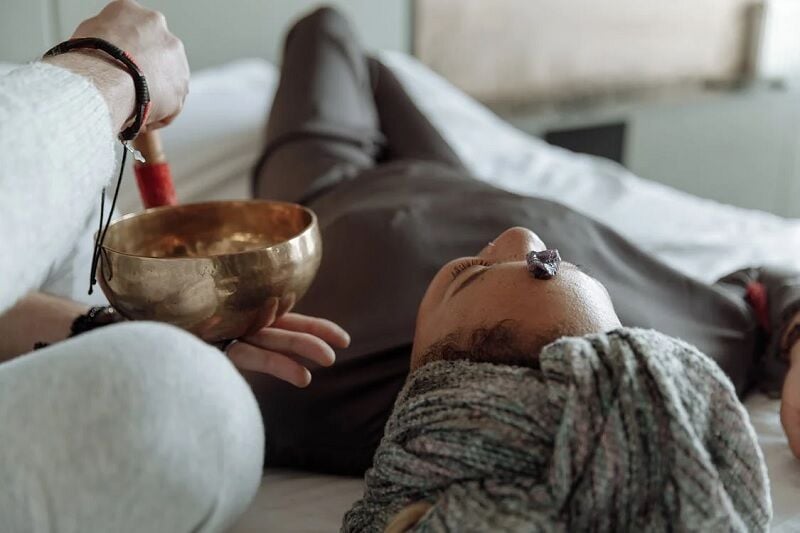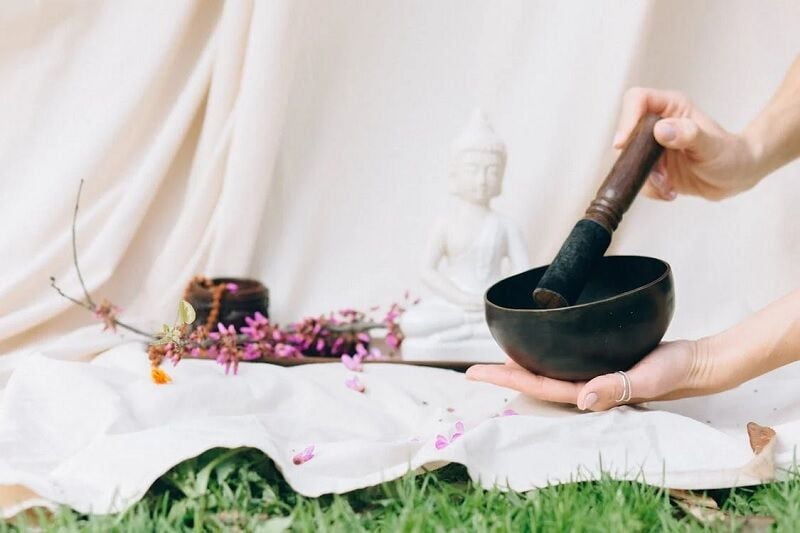How is cannabis is used in ayurvedic medicine

Have you ever been curious about how this often-debated plant has carved out a spot for itself in Ayurvedic medicine? Well, buckle up because you’re not alone, and we’re about to embark on an exhilarating journey exploring the fusion of time-honoured tradition with cutting-edge medicinal revelations.
Ayurveda, with its deep roots in Indian culture, openly celebrates cannabis and its leaves as key ingredients for concocting powerful medicines. This warm embrace allows for the crafting of Ayurvedic remedies infused with cannabis right out of the gate—no need to wait around for clinical trials before they hit the market. It’s a thrilling shortcut that propels cannabis-based therapies forward, positioning Ayurveda as a go-to powerhouse for unlocking the plant’s healing secrets.
Opting for cannabis leaves over the entire plant in these formulations isn’t just a random choice—it’s all about zeroing in on those amazing cannabinoids like CBD and THC that pack a healthful punch. This strategic pick highlights Ayurveda’s savvy approach to reaping cannabis’s benefits amidst its intricate legal and cultural tapestry. As you dive deeper into this rich tradition, you’ll be amazed at how it masterfully blends ancient wisdom with modern science to bring comfort and cure like never before.
Understanding cannabis in ayurveda

Get ready to be amazed by the incredible world of Ayurveda, where cannabis shines as a star with its jaw-dropping dual nature of healing wonders and a cautionary tale against misuse. It’s like discovering a hidden gem in the realm of natural remedies! Ayurvedic wisdom slots cannabis into this exclusive club of plants that are akin to superheroes—capable of swooping in to cure yet requiring the wisdom to wield their powers wisely. This fascinating balance highlights just how crucial it is to know your stuff when diving into medicinal practices.
Cannabis steps onto the Ayurvedic stage, dazzling with its therapeutic superpowers, mainly thanks to two phenomenal cannabinoids: CBD (cannabidiol) and THC (tetrahydrocannabinol). Picture these compounds as your body’s best buddies, interacting with natural systems in ways that can only be described as magical, offering relief from various ailments. And get this—they do all this hero work without the notorious side effects we’ve come to expect from pharmaceutical medicines.
Historical use and references in ancient texts
It’s pretty cool to see how cannabis has been a friend in healing and spirituality for ages. Picture this: the Atharvaveda, an ancient text that goes way back, actually lists cannabis as one of its top five sacred plants. Yeah, that means our ancestors were onto something special with this herb, recognising its value not just for catching vibes but also for health and wellness.
And there’s more—the Sushruta Samhita, which is like an old-school medical textbook, gives cannabis a thumbs up for helping with breathing problems, enhancing exercise performance, and even mentions using it to chill patients out during operations. These shoutouts from the past really show how much faith people had in cannabis to make life better.
Getting into the nitty-gritty of how cannabis fits into Ayurveda opens up this amazing view of why it was picked for so many remedies. It’s all about balance and wellness, with this plant playing a starring role in connecting nature’s pharmacy to our wellbeing journey.
The Ayurvedic classification of cannabis

Gunas (Qualities) and Doshas (Energies)
In the world of Ayurvedic healing, understanding cannabis is like getting to know a friend with unique qualities and seeing how they vibe with your body’s energy. Picture Ayurveda as a way to balance your inner energies, called Doshas, using nature’s gifts, including plants like cannabis. Cannabis comes with its own personality traits – or Gunas – such as being light (laghu) and dry (ruksha). These traits have a special way of interacting with our Doshas: Vata, Pitta, and Kapha.
Thanks to its chill and airy vibes, cannabis is pretty good at calming down Kapha and Vata Doshas. But if you’re someone who naturally runs on high Pitta energy (think fire), adding the warmth of cannabis might be too much of a good thing, possibly throwing your balance off-kilter. So when Ayurvedic experts think about whether cannabis should join your wellness journey, they’re basically making sure it’s going to get along well with your body’s unique energy mix for the best health perks.
Prescribed uses and contraindications
In Ayurveda, cannabis is used with a lot of care and attention to help with certain health issues, making sure it helps as much as possible while keeping any not-so-great effects in check. It’s kind of like having an herbal buddy for easing pain, calming nerves, and helping you catch those Zs, all while being super gentle on your body and mind. Plus, it’s pretty amazing at sorting out tummy troubles too, showing just how versatile it can be in the Ayurvedic toolkit.
But here’s the thing – not everyone should jump on the cannabis train. If you’re someone who tends to run a bit hot or fiery, cannabis might not be your best match since it could stir up more heat inside. And if you’re expecting or dealing with mental health challenges, it’s better to steer clear to avoid any bumpy rides.
Getting to know cannabis through Ayurvedic eyes—getting familiar with its qualities and energies—is super important. This way, using it feels like following a map drawn by ancient wisdom that leads to feeling good while staying safe. Introducing cannabis into your self-care routine is all about being smart and thoughtful about it, letting those age-old Ayurvedic insights lead the way.
The therapeutic applications of cannabis in Ayurveda

In the world of Ayurveda, cannabis is a bit of a superstar when it comes to easing pain and calming inflammation. This ancient healing tradition really values cannabis for its magic touch on aches and swelling. Especially CBD, a special part of the cannabis plant, gets lots of love for helping with stubborn inflammation and those achy joints. Imagine something like Cannaflam—it blends CBD right in and works wonders in making bones stronger and giving your immune system a boost. It’s pretty cool how Ayurveda taps into cannabis’s powers to help us feel better without the side effects that usually come along with regular pain medications.
A friend to your brain according to Ayurveda
In tackling brain health issues like Parkinson’s or Huntington’s Disease, Ayurveda has this unique approach of bringing cannabis into the mix. The idea here is all about balancing our body’s natural systems with cannabinoids from the plant. Take Parkinson’s, where cannabis steps up as a helper for smoother movement control thanks to its action on brain signals. In Huntington’s disease, it helps ease movement troubles and mood swings. Cannabis holds a promising spot in managing these tricky neuro conditions with an Ayurvedic twist.
Boosting gut health & appetite with cannabis
Ayurveda also gives two thumbs up to cannabis for being kind to our digestive system and helping those struggling with appetite. Ever felt queasy or couldn’t keep food down? Cannabis comes through as a gentle remedy against nausea—super helpful for anyone going through rough treatments like chemotherapy. Plus, its knack for reducing inflammation makes it a buddy for folks dealing with tummy troubles like IBS while also getting your appetite back on track.
Finding mental balance
When it comes down to taking care of our minds, Ayurveda doesn’t skip over anxiety and depression—and guess what? Cannabis is part of the conversation here too! Thanks to CBD’s calming vibe, it can be quite an ally in soothing anxiety waves and lifting spirits without stepping on conventional treatments’ toes. It’s all about finding that sweet balance within our mental state, showcasing yet another way this incredible plant supports overall well-being.
Embracing the healing touch of cannabis across Ayurvedic practices
From improving sleep quality to keeping seizures at bay, there’s hardly an area where Ayurveda hasn’t explored using cannabis as part of healing rituals—underscoring just how versatile this green friend can be! With thoughtful consideration ensuring safety first, this approach reflects deep respect towards nature’s remedies aiming at holistic wellness—a core principle deeply woven into every aspect of practising heartfelt Aryuvеdic medicine.
You’ve seen how cannabis, when used judiciously and in combination with other herbs, can offer significant therapeutic benefits. However, the emphasis on legality and ethical sourcing cannot be overlooked. As you explore the potential of cannabis within Ayurvedic treatments, remember the importance of adhering to UK regulations and ensuring you’re informed about the legal status of your practices. By prioritising these aspects, you’re not just complying with the law but also respecting the holistic and patient-centred ethos of Ayurveda. Moving forward, it’s essential to stay updated with evolving legal frameworks to continue benefiting from cannabis in Ayurvedic medicine responsibly and effectively.
Considering the above-shared details, You can also check out the history of Cannabis and Thai Traditional Medicine, Thailand made headlines as it took a bold step towards embracing the therapeutic potential of cannabis by enabling access to it for medical use. This monumental decision ushers in a new era of possibilities for alternative medicine in the country.
Latest Thailand News
Follow The Thaiger on Google News:


























